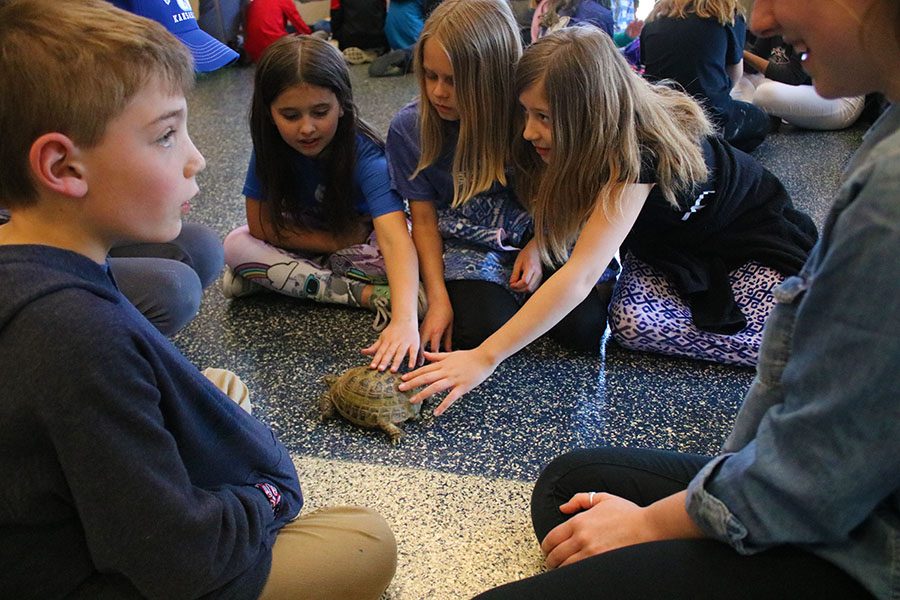Students present animals to kids
May 9, 2018
For over 25 years, the Student Naturalist class has held annual presentations for students at about 10 elementary schools including Bentwood, Blackbob, Green Spring and Sunnyside.
The Student Naturalist students rotate the animals that they take care of among themselves every two weeks during the first, second and third quarters.
The students then choose an animal and research the animal extensively in preparation for the presentations that will be held every Wednesday and Thursday in April and once in May.
As part of their field trips, the elementary students either walk or take the bus to see the presentations.
According to Joan Radakovich, Student Naturalist teacher, the elementary students’ favorite field trip is coming to see all the different animals that they would have never seen otherwise.
The elementary students are split into groups of three to four students and cycle through 22 to 25 animals, spending about four minutes listening to the presentation, asking questions and touching the animals.
“Kids are very curious and they like to learn about things especially animals,” Gabrielle Nielsen, senior, stated.
Radakovich recalled that during one year of the presentation, elementary students asked whether they could get to cut the leopard gecko’s tail once they learnt that geckos usually drop their tail when they are ambushed by a predator and they can regrow them.
Every Student Naturalist class gets to present every day that presentations are held for the elementary students. The students are graded based on their participation in the presentation.
Radakovich states that depending on the precipitation and temperature, they sometime go outside and present. This year, the presentations were held at the school exit near the Black Box theater and outside as well.
During the presentation, one of the elementary students was bit by a hamster. The bite was disinfected and a band aid was placed over it.
Apart from problem solving, the class teaches the students responsibility for the animals because they have to feed the animals and clean their habitats.
The class is also good at teaching children public speaking because the students not only present to the elementary students, but also the elementary students’ parents and teachers, according to Nielsen.
The students often volunteer take the animals home during spring, winter and summer breaks to take care of them, with parental consent. If any animals remain, Radakovich takes them to her home and cares for them.
If given a chance to take the class again, Nielsen states that she would be happy to do it all again because she found it enjoyable.
Most of the animals the Student Naturalist class has were donated. Also, all the animals’ check ups or any medical needs, including surgeries, are provided by Olathe Animal Hospital for free.

